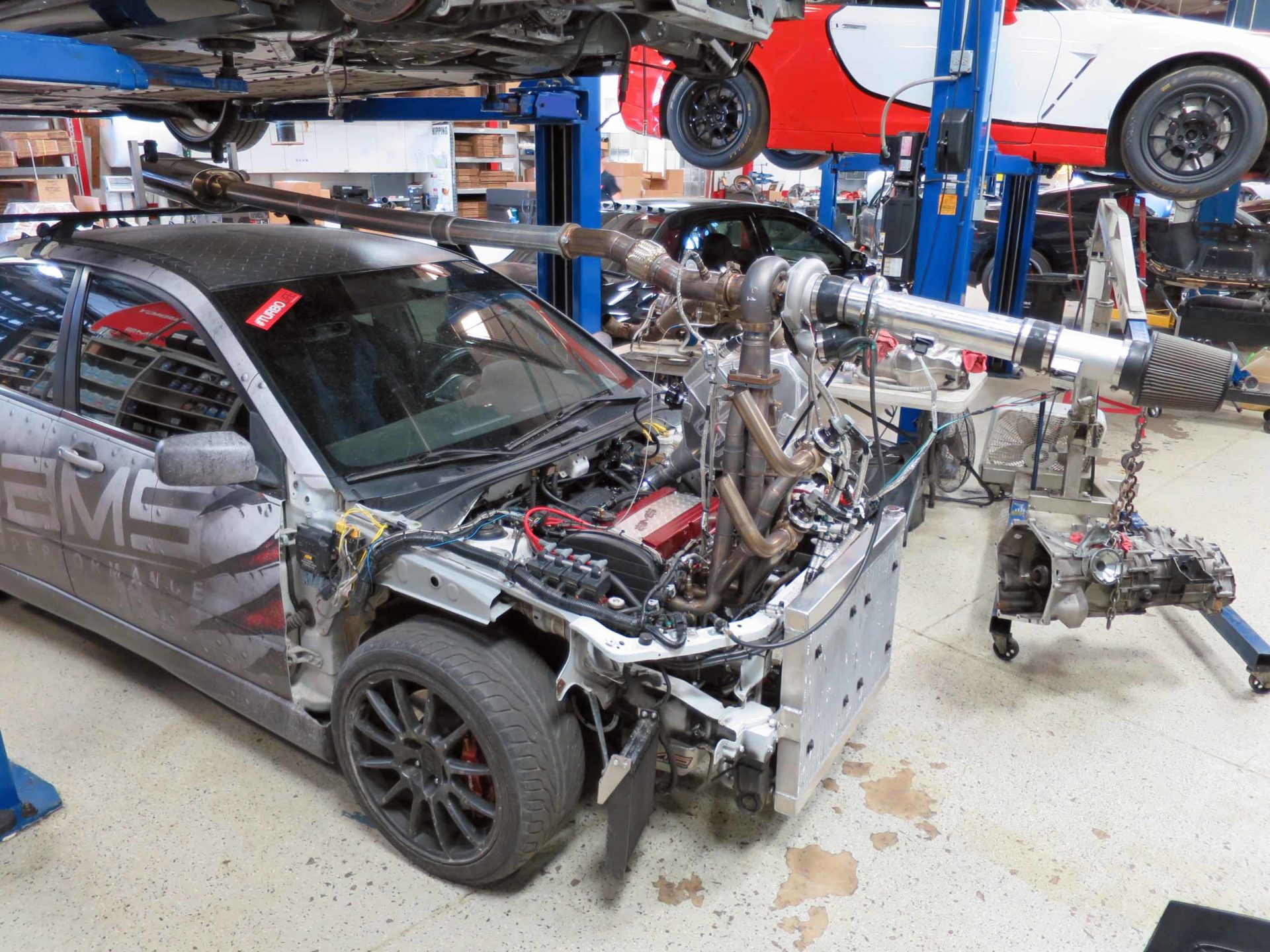


With all of the instrumentation, AMS is able to generate compressor and turbine maps. As the test rig is a real engine, they are also able to quantify boost threshold and power differences associated with different turbo sizes, different turbine housing sizes, and twin-scroll vs. open volute. One interesting thing is the engine was subjected to the most abuse by the GTX28 size turbos because they spooled so quickly. AMS tried to hit the top speed line for every turbo which means 185k rpm on the GTX2860R and a pressure ratio of almost 4.0. So over 40psi of boost at low engine speed creates massive torque and cylinder pressures which really tested the strength engine. It’s maybe counterintuitive that small turbos can be more stressful on an engine than big turbos, but that’s what happens when one creates insane cylinder pressures are low engine speeds.
So now AMS is armed with a ton of real world turbo sizing data. They created a website dedicated to turbos, so check it out here!




1 comment
It is wonderful to be here with everyone, I have a lot of knowledge from what you share, to say thank you, the information and knowledge here helps me a lot